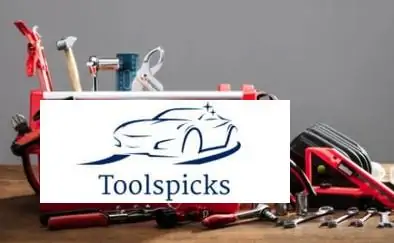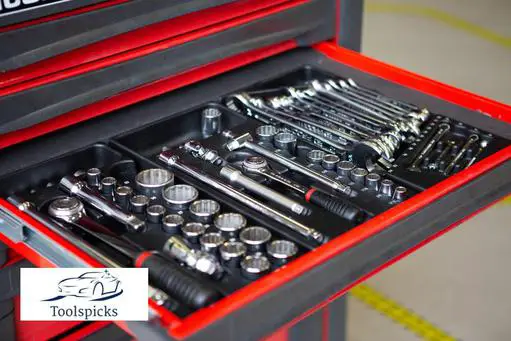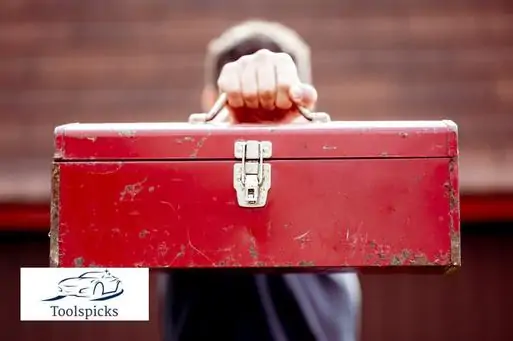Imagine having all of your tools at your residence or workshop but having difficulty finding them when you need them the most. That’s where the perfect toolbox comes in. It allows you to manage all your equipment in one place, maximizing space for storage and keeping the storage unit tidy and organized. The best part is that with access to the right tools, you can totally take on a DIY project.
Selecting a tool storage unit is almost as enjoyable as purchasing the tools. Tool storage comes in many styles and functions to suit everyone’s requirements, from the do-it-yourselfer at home to the qualified expert. With all the options available, there is no excuse for not keeping your tools protected and ready to use. Before buying a toolbox, here are a few things that you need to consider:
The Durability of The Toolbox
The most important feature of a toolbox is its durability. A toolbox is a significant investment that you should not treat lightly. You need to be cautious regarding the material used in a toolbox’s construction to guarantee you’re buying one that can do the job.
The Tools You Want to Keep
Consider the tools you intend to place in your new toolbox because toolboxes come in various sizes. You might require broader drawers for bigger and larger equipment.
The Drawer Design of The Toolbox

Also, consider the type of equipment you intend to store. For example, heavier tools require more robust toolbox drawers with firmer rail systems. You screwdrivers, pliers, and wrenches on the other hand, can be nicely laid out in shallow drawers.
The Security System of The Toolbox
One of the primary motivations for using a toolbox is to keep your equipment safe. As a result, the toolbox must have a suitable locking mechanism.
Some toolboxes have an inbuilt locking system to protect the contents when the upper cover is closed. Other models have a lock and key security system.
The Toolbox Lid Design
You may consider a toolbox without a worktop, however, most units come with a lid. Usually, the top reveals more storage capacity for smaller items inside.
Be extremely cautious when it comes to the design of the lid. To have the option of keeping the lid opened while working, select one with a single rear hinge and assist arms on either side. The last thing you want is for the top to slam down on your hands as you reach in for a tool.
The Portability of the Toolbox
Tools can be very bulky but finding the right toolbox can help you manage the weight more efficiently.
If you’re a tradesperson, having to transport all your larger tools and hand tools housed in your tool chest from one job to another is difficult because they are so big and heavy. Being able to take along what you need for a job is important so you must consider a portable tool box to accompany your toolkit.
The Handles and Casters of the Toolbox
Casters allow for easy movement around a room or workspace, so it is something to consider. Toolboxes with large, sturdy handles also add convenience and ease of use.
The Color and Coating of the Toolbox
You can choose any color for your residential toolbox, however, industrial services require special color coating or codes due to standards and security guidelines.
The Loading Capacity of the Toolbox
Every toolbox has a storage capacity that has been specified or pre-set to notify the user of the maximum storage weight to prevent unwanted incidents while transporting and traveling.
Typically, small-sized toolkits have a weight capacity of around five kilograms, while large-sized toolkits can withstand weights of up to fifty kilograms and have wheels connected for ease of movement.
Your Workplace Environment
What kind of surroundings do you typically encounter in your workspace? We ask because the surroundings influence the material used to make your new toolbox. The professionals advise against using anything other than steel.
For a casual DIY-er, a stainless steel toolbox may be out of your price range. If your surroundings aren’t too harsh and you take on simple projects, an aluminum or plastic toolbox may do the trick. If you do hard labor, spend the extra money, and go with a steel toolbox.
The Toolbox Warranty
The finest toolmakers in the industry have no hesitations about providing warranties on their goods. So, if you’re looking for a good toolbox, this is something you should definitely look for.
You might score big and find an item with a lifetime guarantee against manufacturing issues. More commonly, however, the maximum you’ll find is a restricted multi-year guarantee. Having a warranty ensures that if anything horrible happens to your unit, you could have protection.
The Toolbox Price
The investment amount is always a significant determinant. Set a budget for your toolbox purchase and buy accordingly. Look up customer reviews when shopping online to be sure you’re choosing a quality product.
Different Types of Toolboxes
Here are a few different types of toolboxes:
Plastic Toolbox:
A plastic toolbox is a fast, efficient, and low-cost way of storing your equipment for daily use. These are commonly known as empty boxes since they are primarily used to store tools in a residence, storage shed, or construction site.
A toolkit can be helpful and resilient for easy access to tools, bolts, and pins. Whatever style you choose, search for a unit that includes some organizational extras. Some toolboxes come with detachable baskets, a magnetic compartment, and other storage accessories that take the organizer to the next level.
Aluminum Toolbox:
Aluminum is a widely used material because it is sturdy and light, similar to plastic. Although aluminum toolboxes are slightly more expensive than plastic ones, they last longer.
As a result, these toolboxes are highly preferred in mass transit and chemical industries, where sturdy and lightweight toolboxes are critical for success.
Steel Toolbox:
A steel toolbox is the best option if you need an extra tough unit. These designs are engineered to be highly durable, strong, and wear-resistant.
While steel is more expensive, it is also easier to care for and generally lasts much longer than the other choices, making it a good option for professional and commercial use. You can use these in situations where the protection and safety of a tool or piece of equipment are critical to the business’s success.
Waterproof Toolbox:
These tool kits include an overall water seal that guarantees secure and dry capacity and is exceedingly requested when carrying spears and testing gear.
These toolboxes are made of basic foam that further improves the quality of the unit. The intense ergonomic soft-grip handle allows you to move heavy loads easily. Lastly, the expansive metal rust-free hooks help you to easily close the box when you do not need it.
Cantilever Toolbox:
These toolboxes have a distinct and professional appearance, with two or four cabinets and a bottom tray for additional load support.
As a matter of fact, personal cabinets provide more organizational area, which is beneficial because it allows you to quickly access your equipment without stacking things on top of each other. This makes it an excellent choice for artisans, renovators, and other construction-related experts who require quick access to equipment.
In addition, these designs’ ergonomic structure enables you to raise and move the box even when transporting large objects. Finally, the box is built with a metal body for extra support. This implies you can use it repetitively without issue.
Reasons Why You Should Have a Toolbox
Here are some of the reasons to purchase a toolbox:
- Allow you to store your tools in any suitable area
- Tools are ready to use when you need them
- Tools are stored responsibly and safely
- A well- arranged toolbox can help complete tasks faster and more efficiently
- Keeping tools in a box protects them and decreases the chance of damage
From hand saws to power tools to combination wrenches, having a practical tool organizer to accompany your tool cabinet is an essential extension to your workshop storage system.


